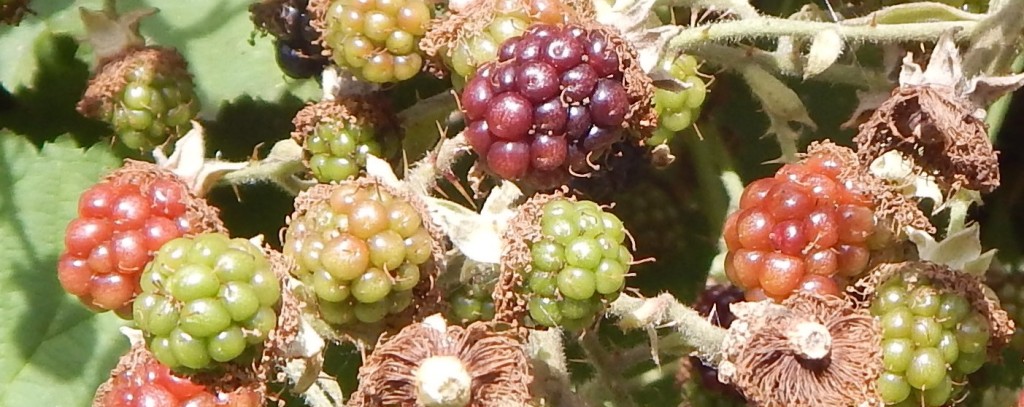
[306] Rubus ulmifolius, Elmleaf Blackberry or Wild Blackberry
Introduction
Species in the Genus Rubus are hard to identify and difficult to name. They may be called Blackberries or brambles or briars. Rubus ulmifolius is the common and widespread wild blackberry of the UK known as Elmleaf Blackberry.
There may be about four hundred species or microspecies of Rubus. Many are known as Blackberry or Raspberry and other names such as Wineberry and Dewberry.
I will also look at the genus Ribes, usually known as Currants.
Taxonomy
Kingdom – Plants
Division – Vascular Plants
Class – Angiosperms (Flowering Plants)
Order – Rosales
Family – Rosaceae
Subfamily – Rosoideae
Tribe – Rubeae (Single genus)
Genus – Rubus
Subgenus – Rubus
Section – Rubus
Scientific Name – Rubus ulmifolius
See text for species.
Name
Berry is an old word, from early Germanic roots, that means a small succulent fruit, not always technically corresponding to the modern botanical berry. Blackberry relates clearly to the colour of the mature fruits of Rubus ulmifolius. The plants are generally called after the fruits.
Bramble is also from old Germanic roots. It is a diminutive form, cognate with broom, and can mean any thorny shrub.
Briar is an Old English word used more generally for thorny plants including Roses.
Rubus is the Latin word for the plant, coming from ruber, which means red. Ulmi-folius, of course means elm-leaf.
Berries and Currants
Science tries to be precise and often does so by redefining everyday terms in precise ways that makes their normal use incorrect. What we call blackberries are not what botanists call berries. They are aggregate fruits of small drupelets.
Raspberries are also species of Rubus. We may think of blackberries as black and raspberries as red but there is another technical difference. When picked, blackberries retain the connection to the stem (known as the torus) but raspberries do not. So, the fruit of a raspberry is hollow. Both come in various colours.
(Strawberries are also not berries.)
Description
The classifications within Rubus are complex. One view divides it into thirteen subgenera and the main subgenus Rubus is divided into twelve sections.
Rubus ulmifolius is the only species of Rubus to reproduce sexually like most plants. (Other species of Rubus reproduce by facultative apomyxis. This means that usually the seeds produce plants that are clonally similar to the parents, but some sexual reproduction may occur. Each widespread clone may be considered as a microspecies.)
I think that most of the wild blackberries in the UK are Rubus ulmifolius but some other species are possible, including Rubus plicatus.
Rubus ulmifolius can grow as a large shrub up to five metres tall but often seen spreading between other species in hedges. Its form is a tangled, prickly spreading shrub – a form associated with the word bramble.


It can grow by putting out horizontal runners.


The compound leaves have serrated edges and may show clear vein structure.









Stems are normally covered in spines. Let’s not worry about the botanical distinctions between thorns, prickles and spines.

Flowers emerge from spherical buds as open flowers that look similar to Dog Roses but slightly smaller. They are almost white, sometimes starting as a pink colour.

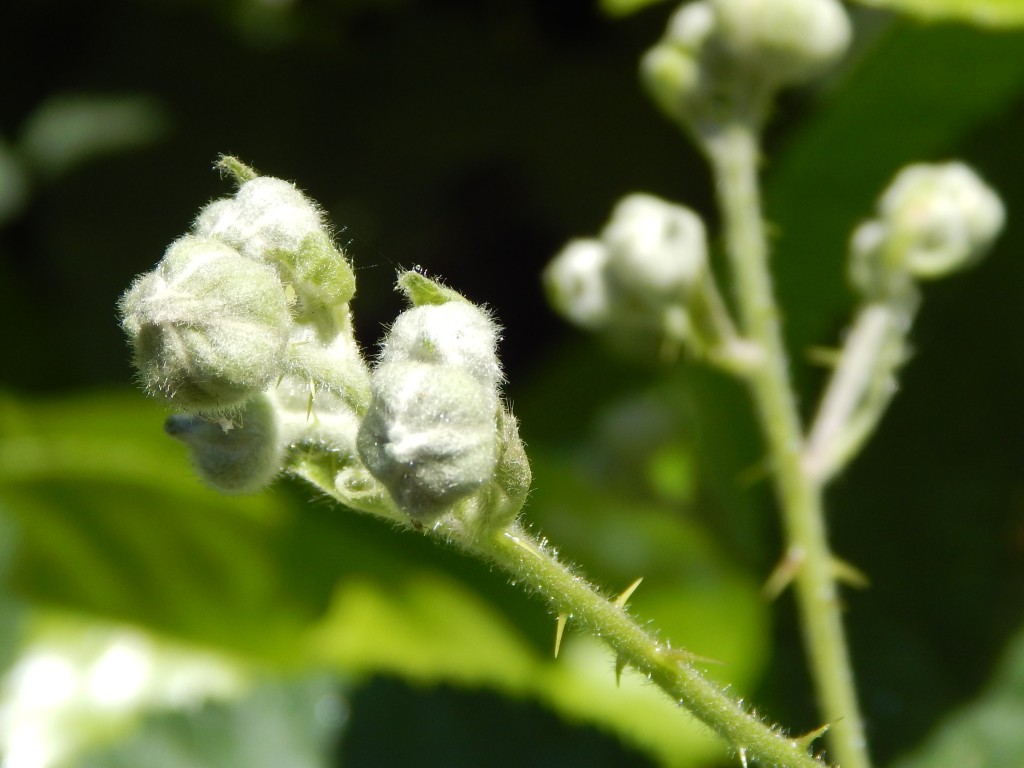

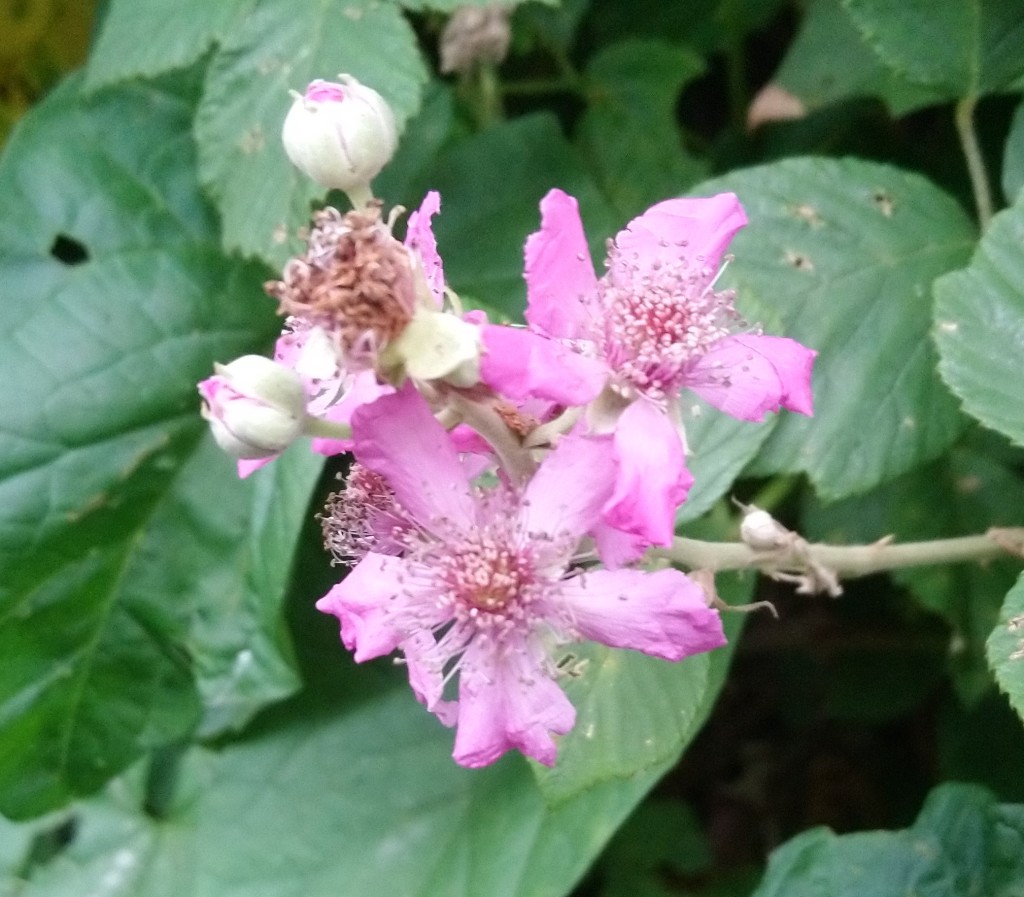
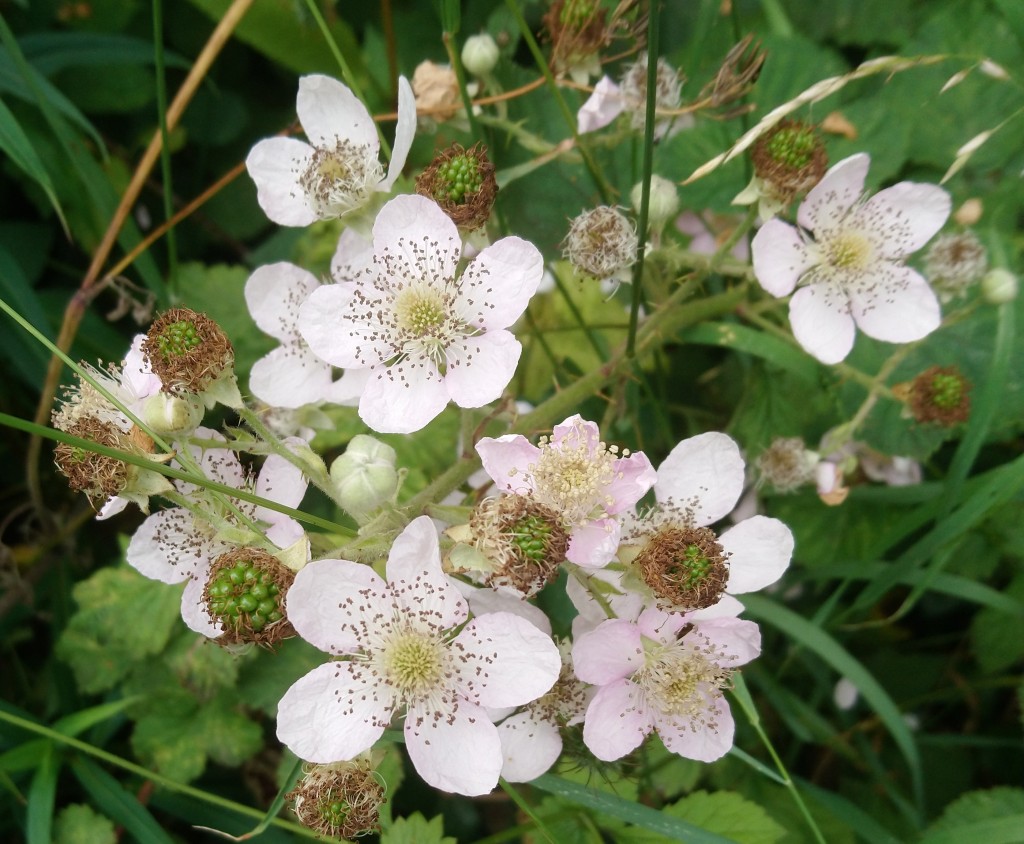



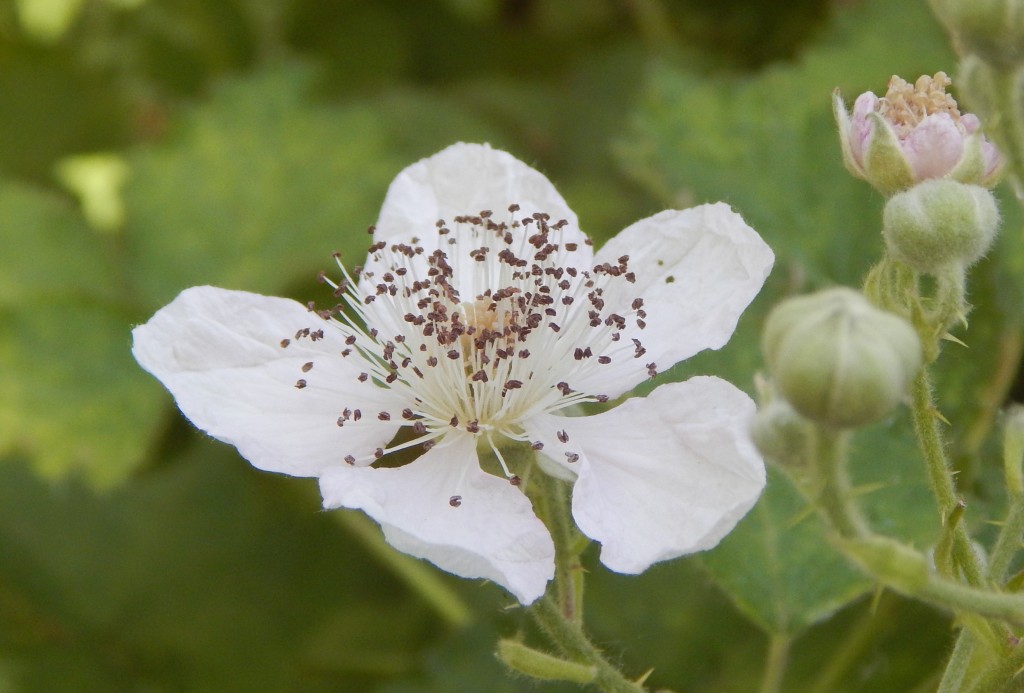
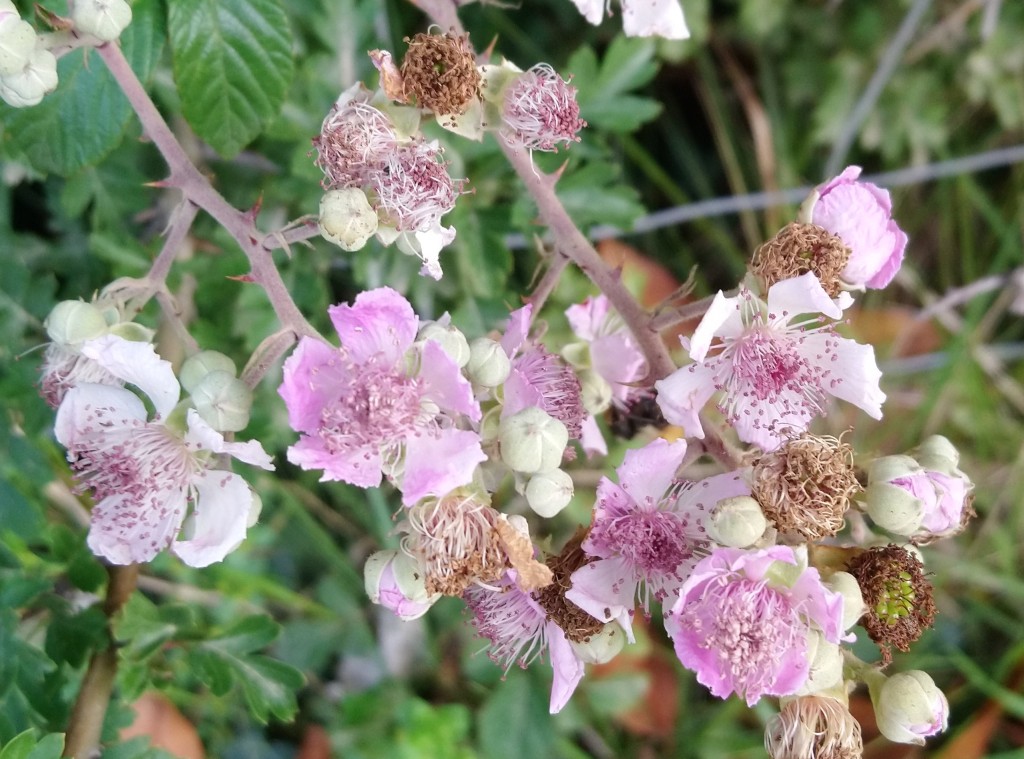
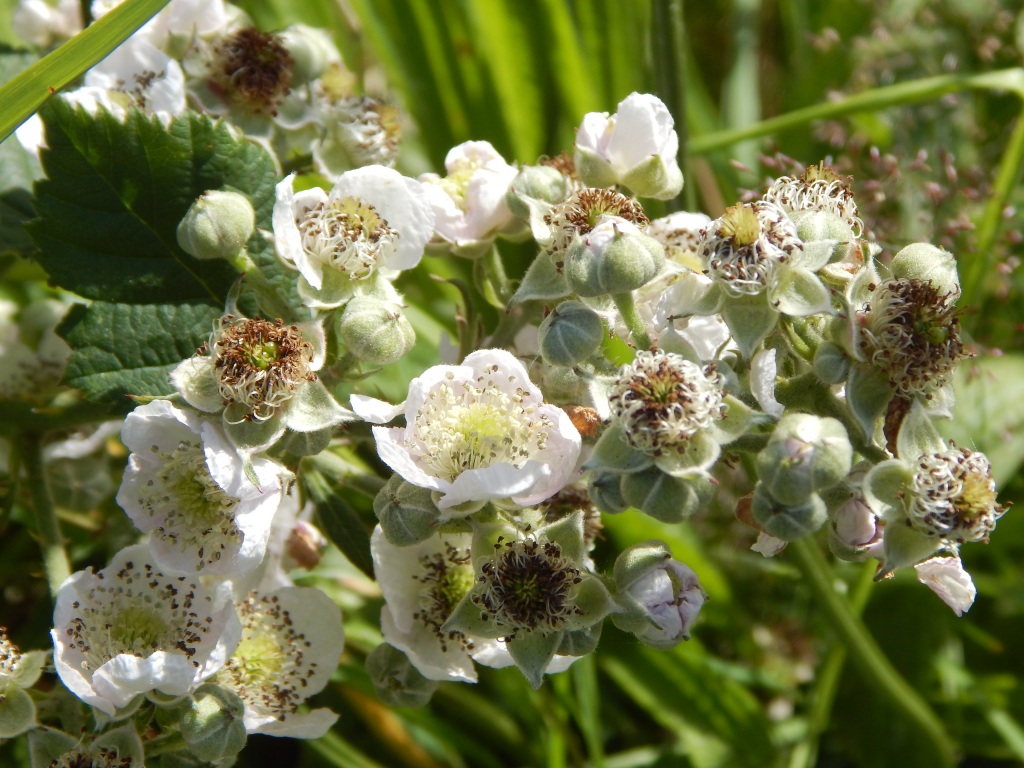
The familiar fruits start green, then turn red and eventually black.

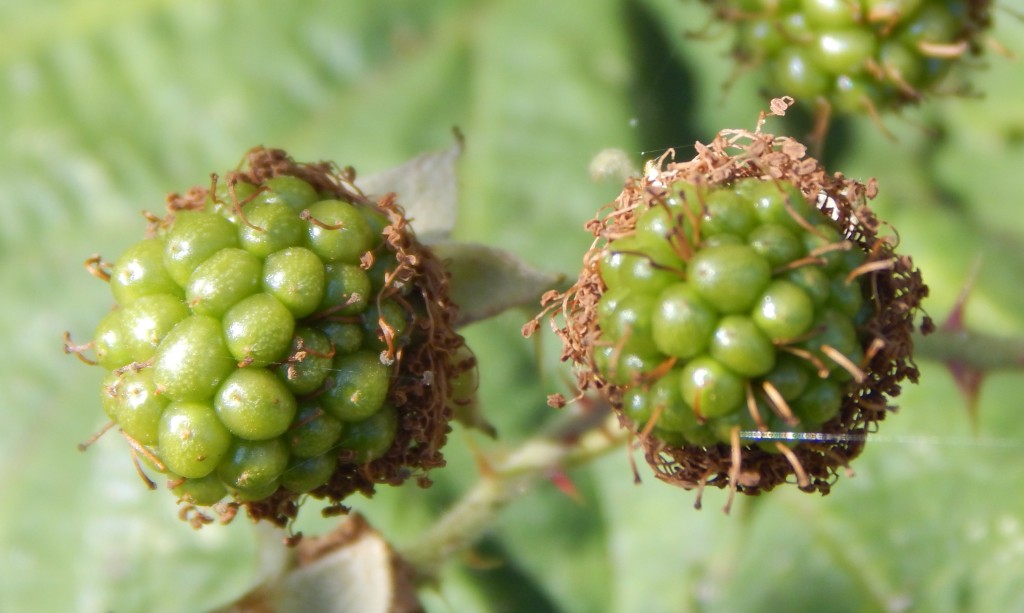

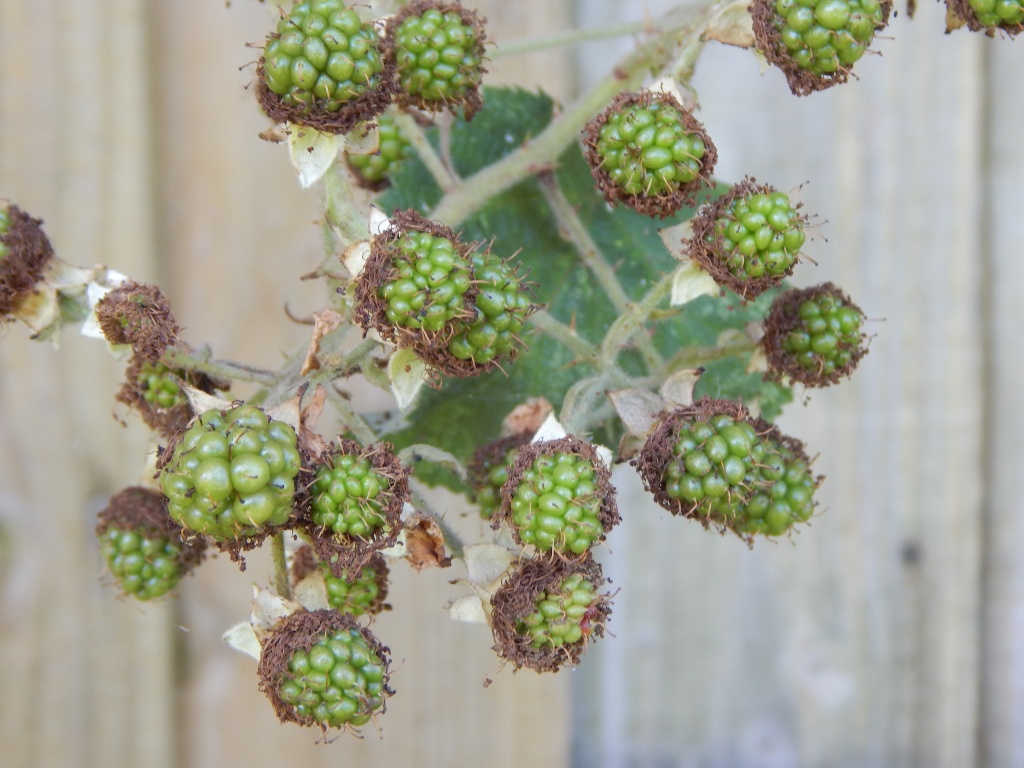
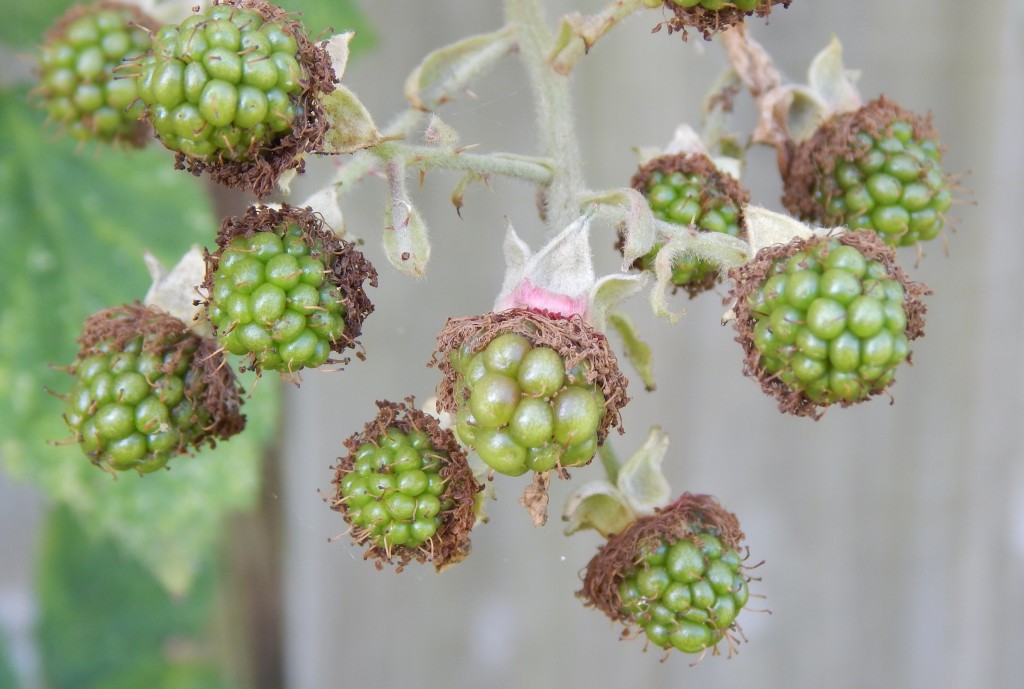
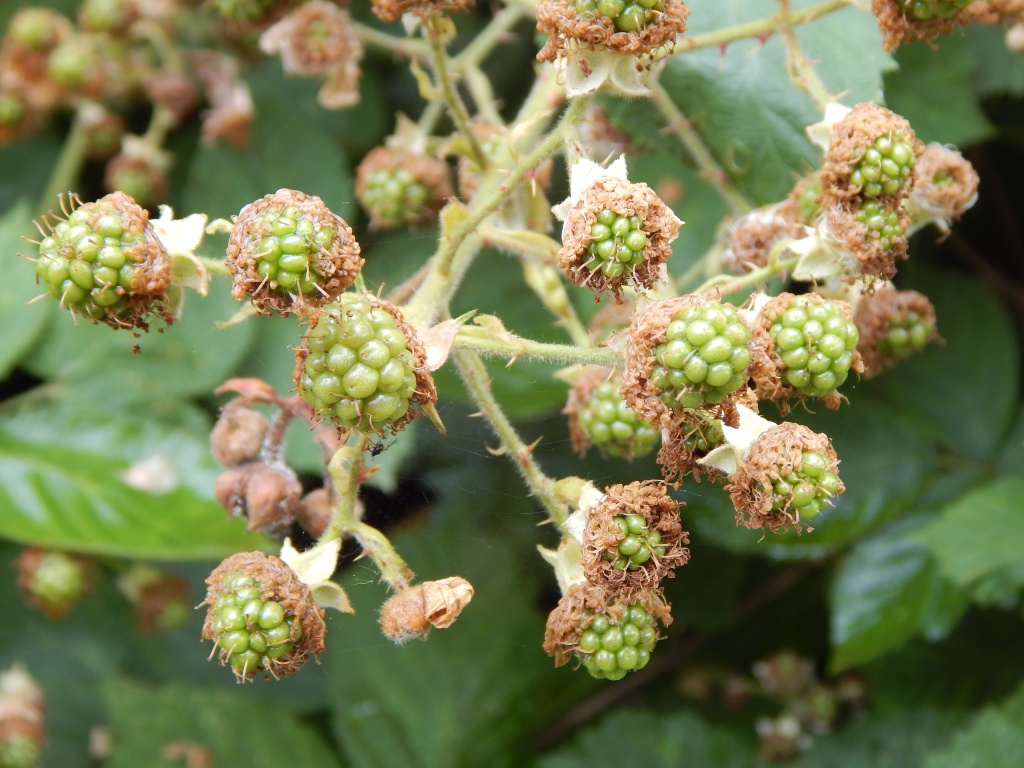
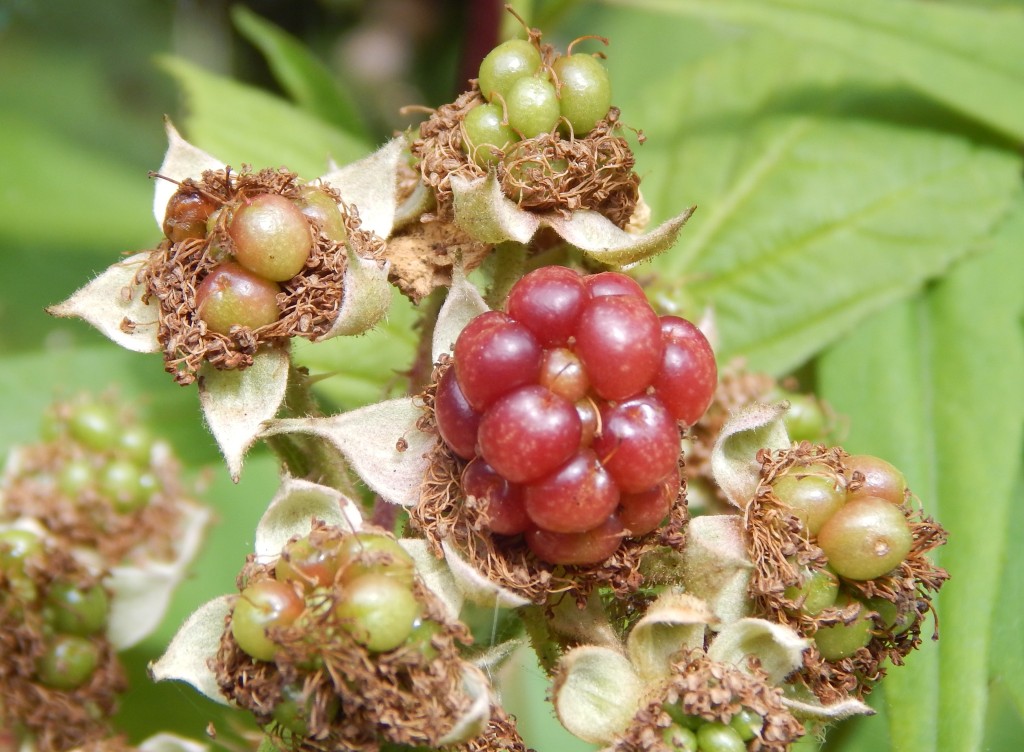
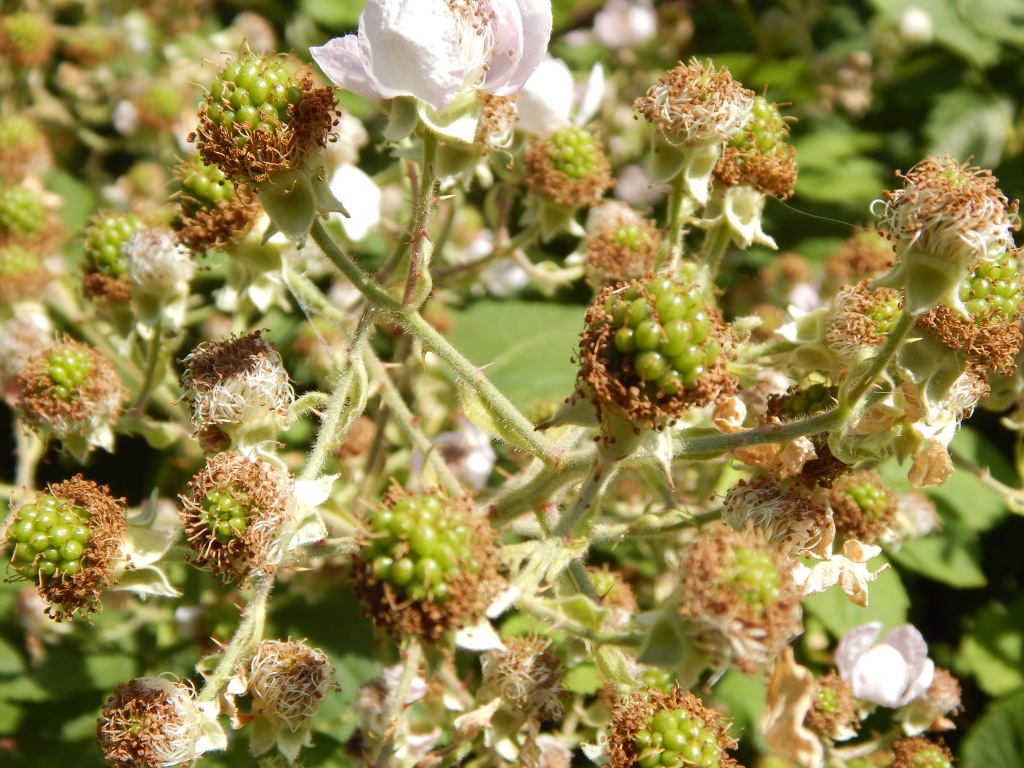
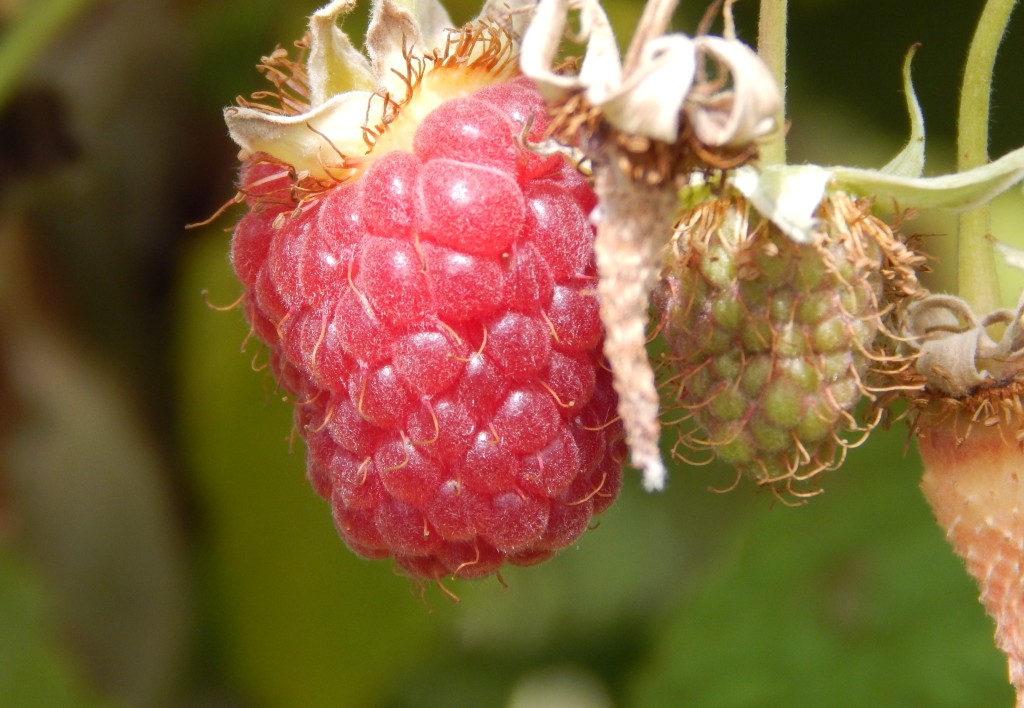



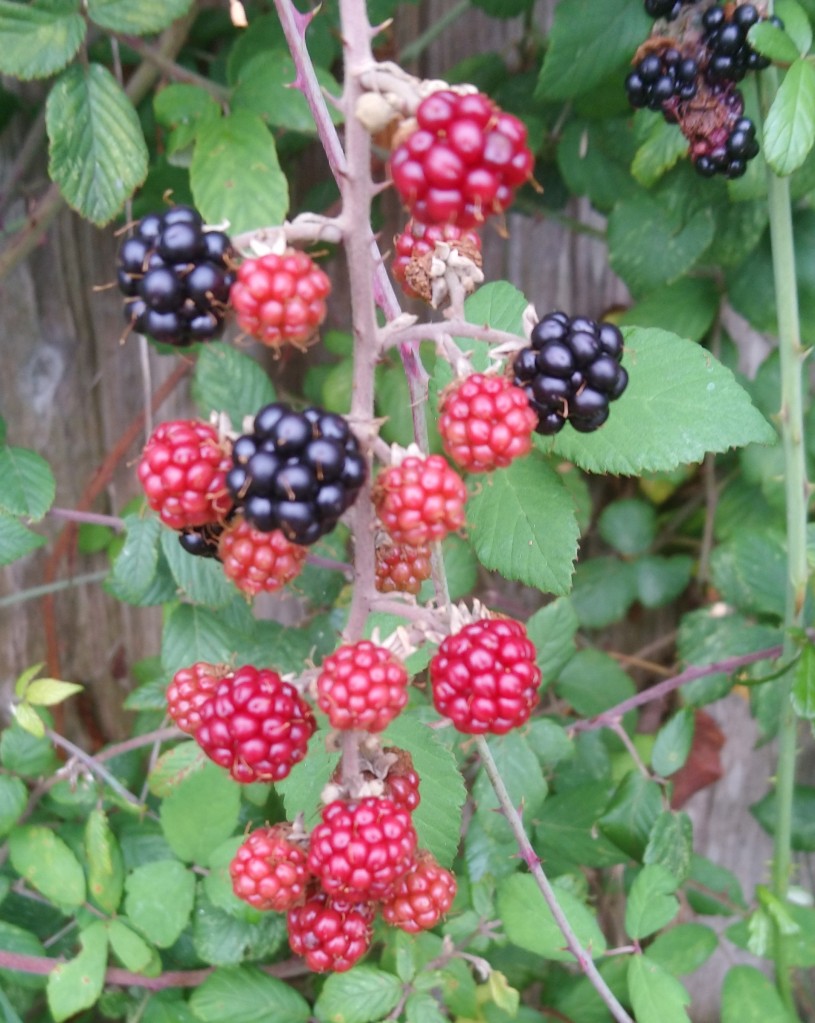
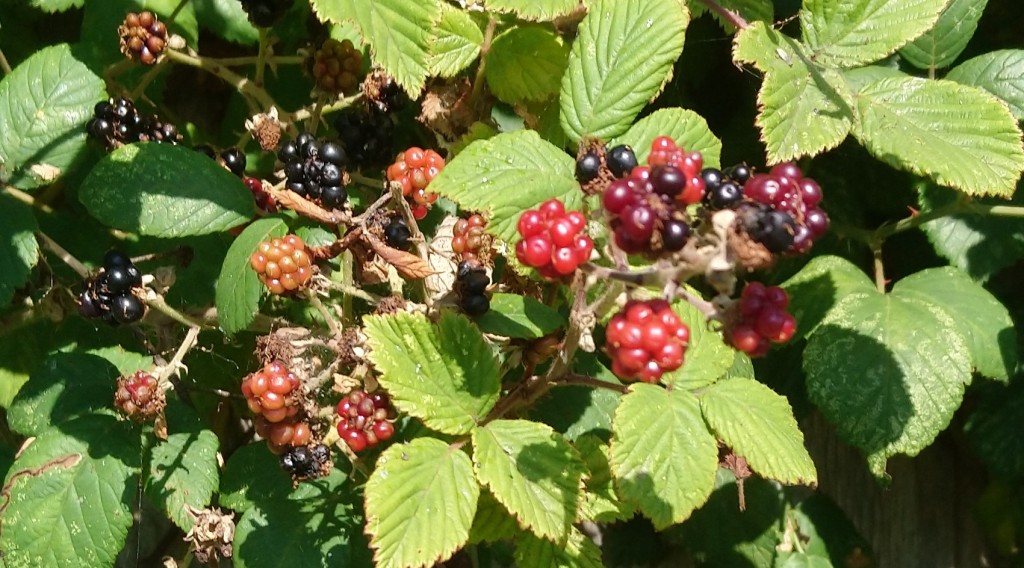

It has a long flowering season and it is quite common to see a bush covered in a mixture of buds, flowers, green berries, red berries and black berries.

Habitat and use
Rubus ulmifolius is native to Western Europe and is common and widespread in the UK. It is found in hedgerows, woodland edges and open land and can be an unwanted weed in rural locations.
Several species of Rubus are cultivated for ornament use, sometimes with interesting foliage.
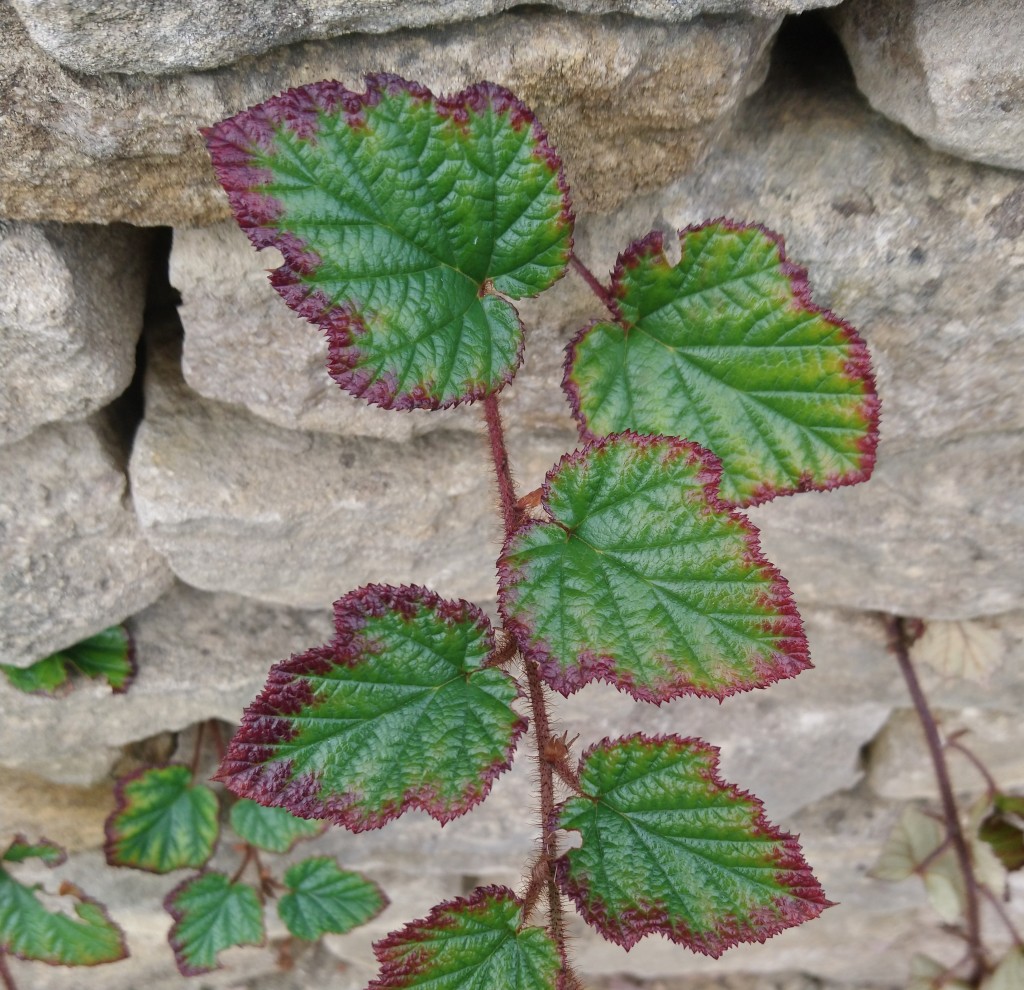
Blackberries are used to make desserts and jams. Mexico and the USA are the main producers.
Many species of raspberry come from Rubus subgenus Idaeobatus, or other subgenera. They are produced commercially from several hybrid cultivars. Russia, Mexico, Serbia and the USA are the main producing countries. We normally think of raspberries as red but black, purple or yellow fruited cultivars are available. Raspberries usually take the form of upright canes rather than spreading brambles.
Other Notes
You can find Blackberries everywhere. On country walks its nasty thorns as unwanted as the [353] Stinging Nettles you may have to walk through.
I have to include the following picture taken on a Blackberry bush.

You will, of course, recognize it as [094] Dock Bug.
See also
The genus Ribes is not really a close relative but I have included it here. It is the only genus in a separate family Grossulariaceae in the order Saxifragales. It has about 200 species in a number of subgenera and sections, including those cultivated commercially as blackcurrants, redcurrants and gooseberries. Their fruits really are berries in the botanical sense.
Wild gooseberries may be found in the UK but is unclear whether they are really wild or have naturalised after escaping from cultivation. I won’t tell you why children used to be told that babies were found under gooseberry bushes but you can look it up. (I am old enough never to be told anything other than the gooseberry story or ‘brought by the stork.’)
You probably won’t see any blackcurrants, redcurrants or gooseberries in Britain. The only reason I have added this section is that you may see Ribes sanguineum, the Flowering Currant, cultivated as an ornament plant.
As you may have guessed, other species and hybrids and cultivars are available.

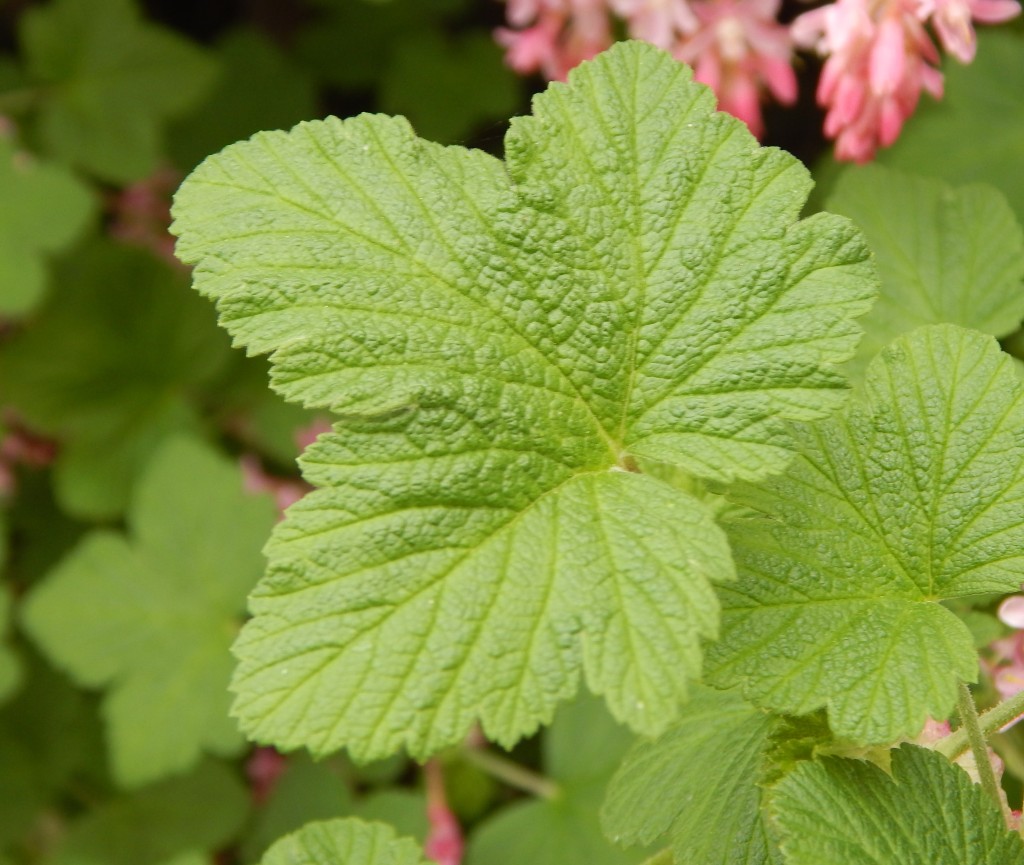
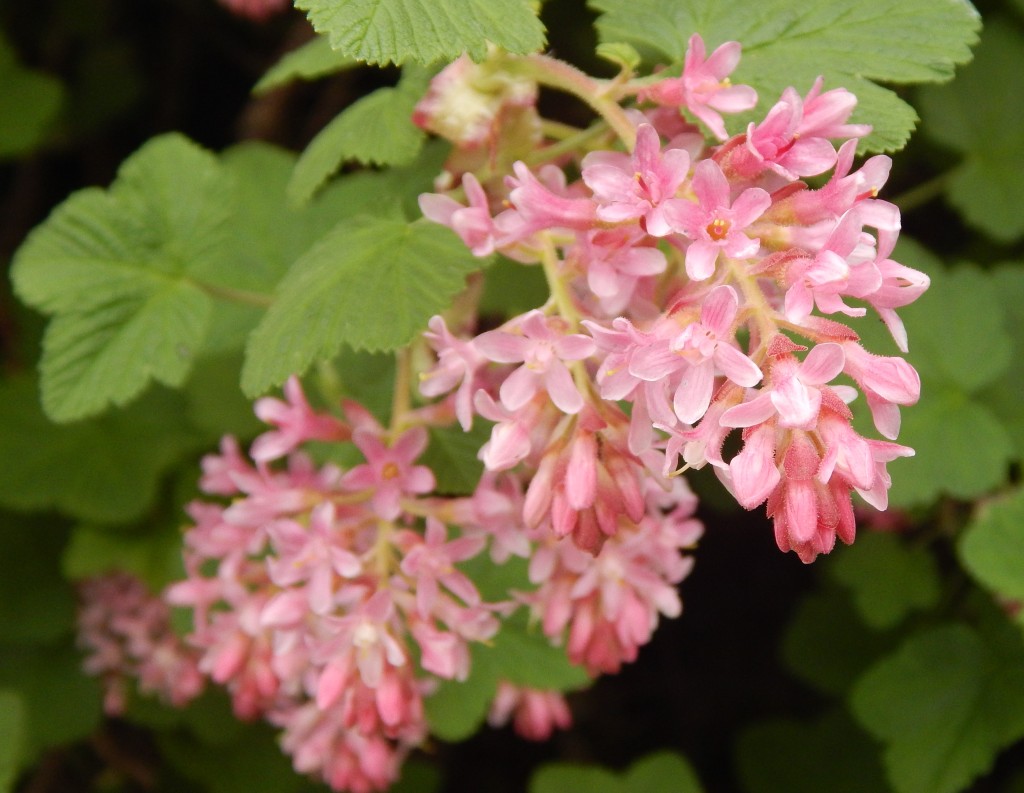
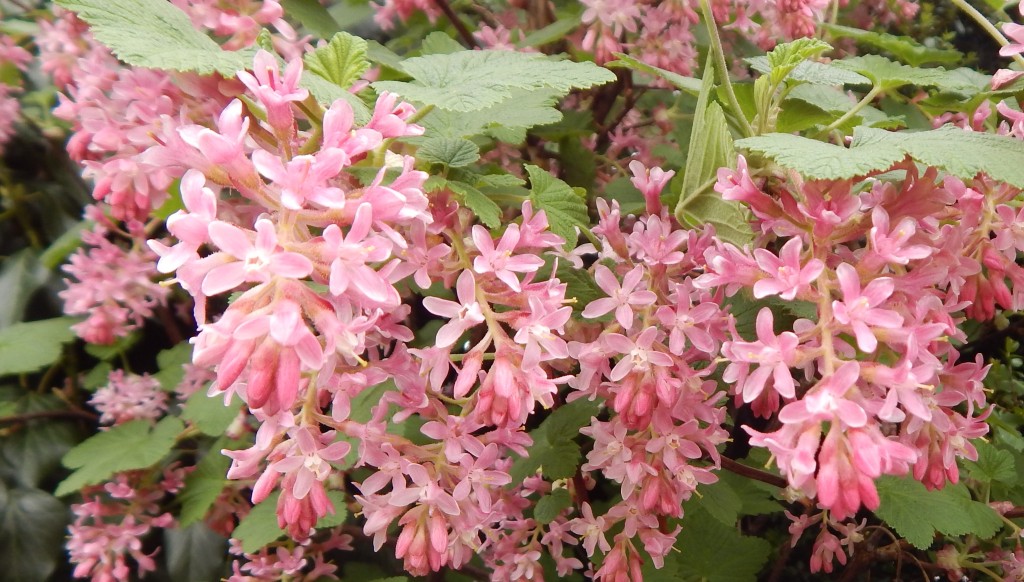

Pingback: [353] Urtica dioica, Stinging Nettle | The Species of Britain